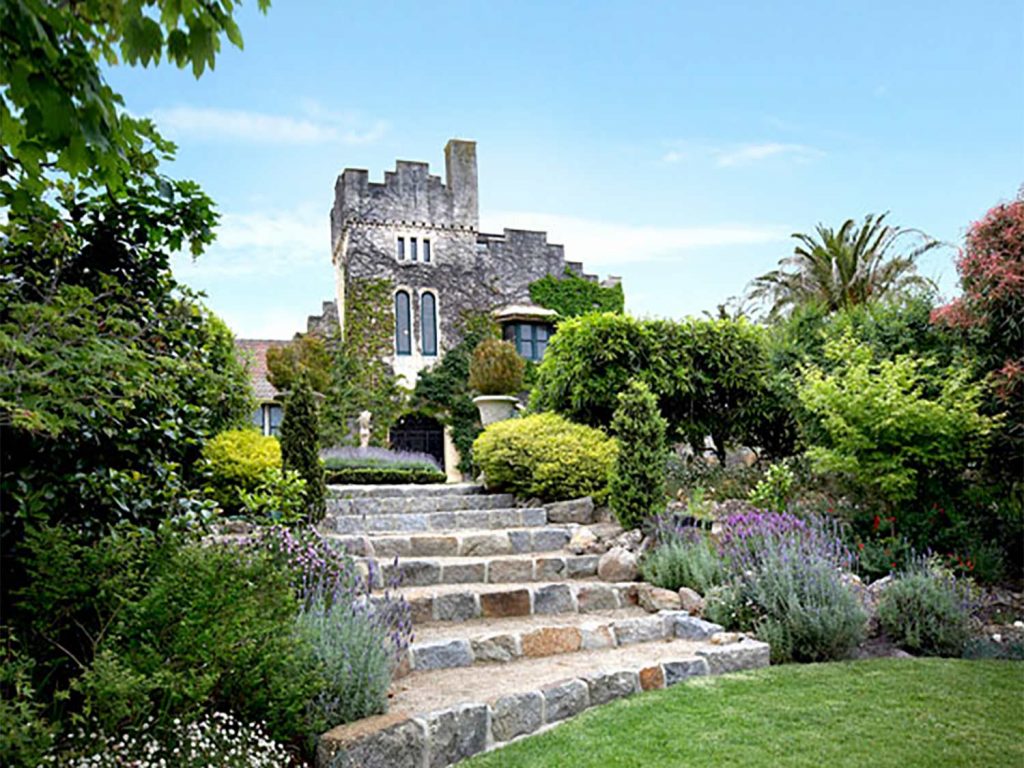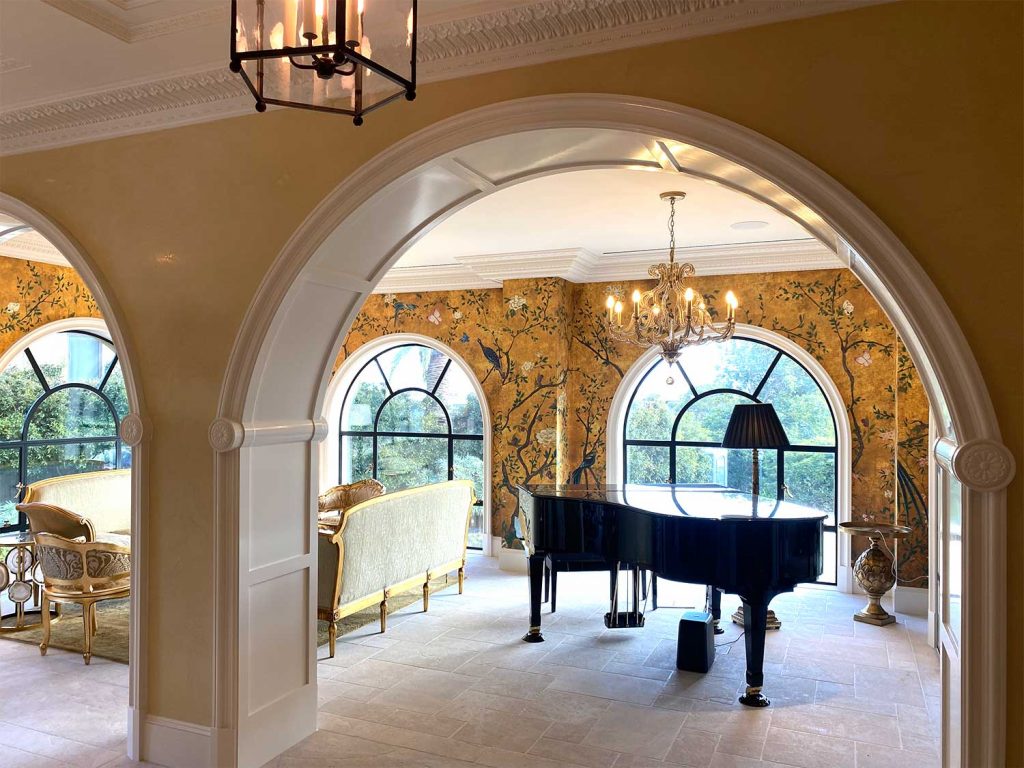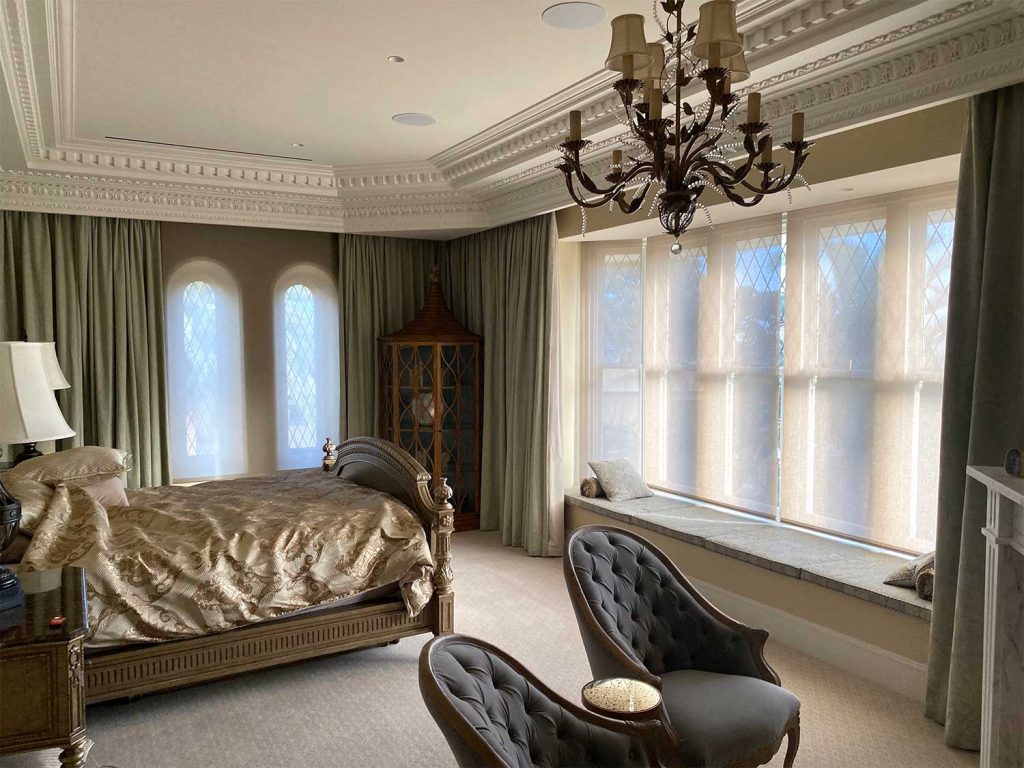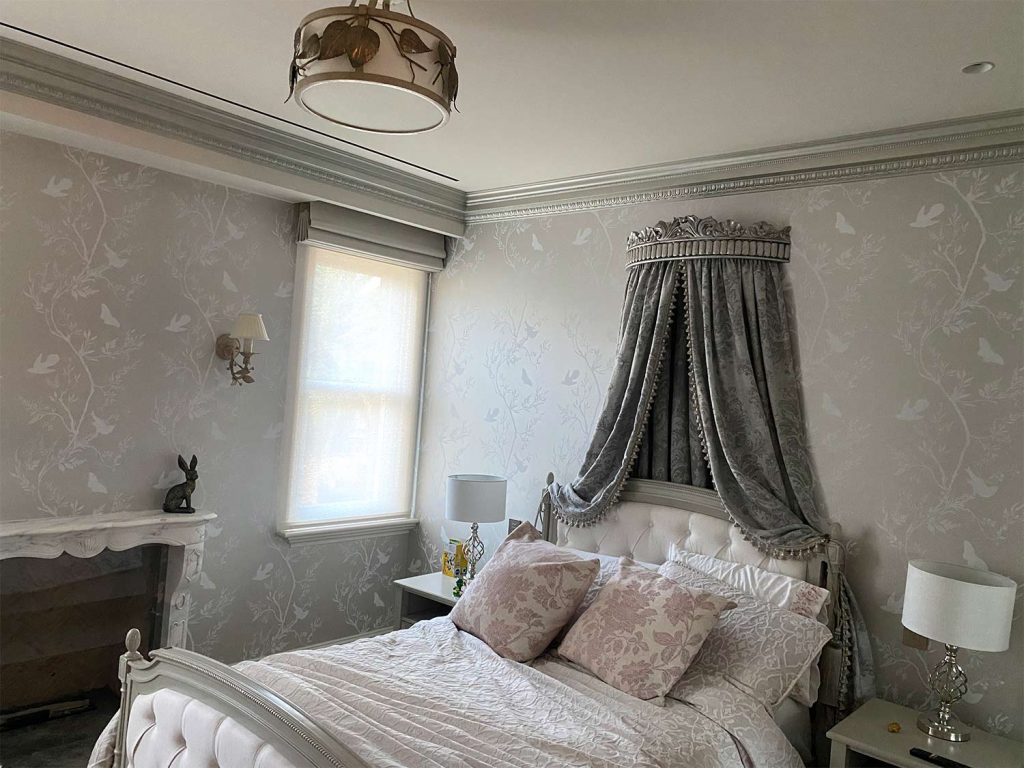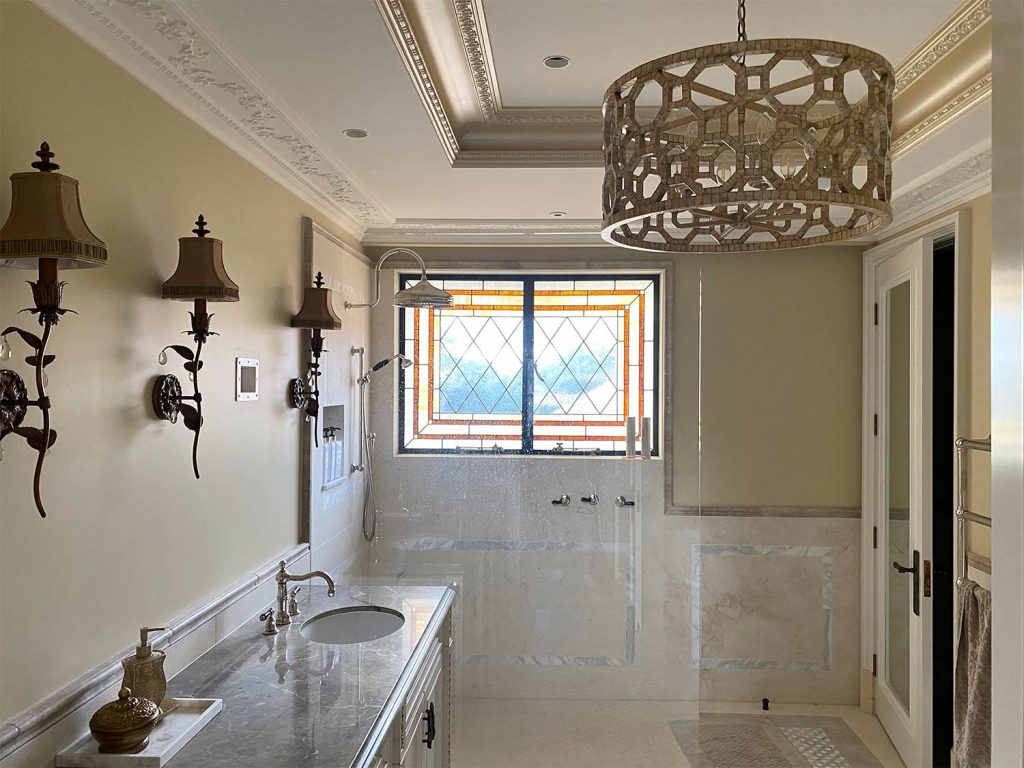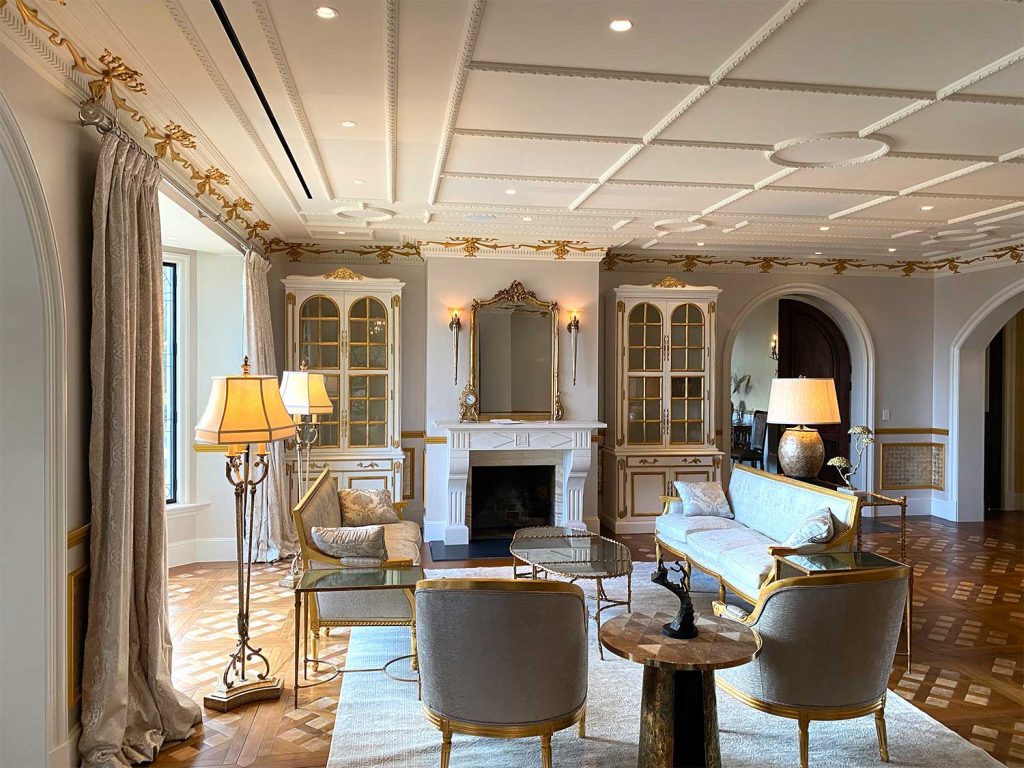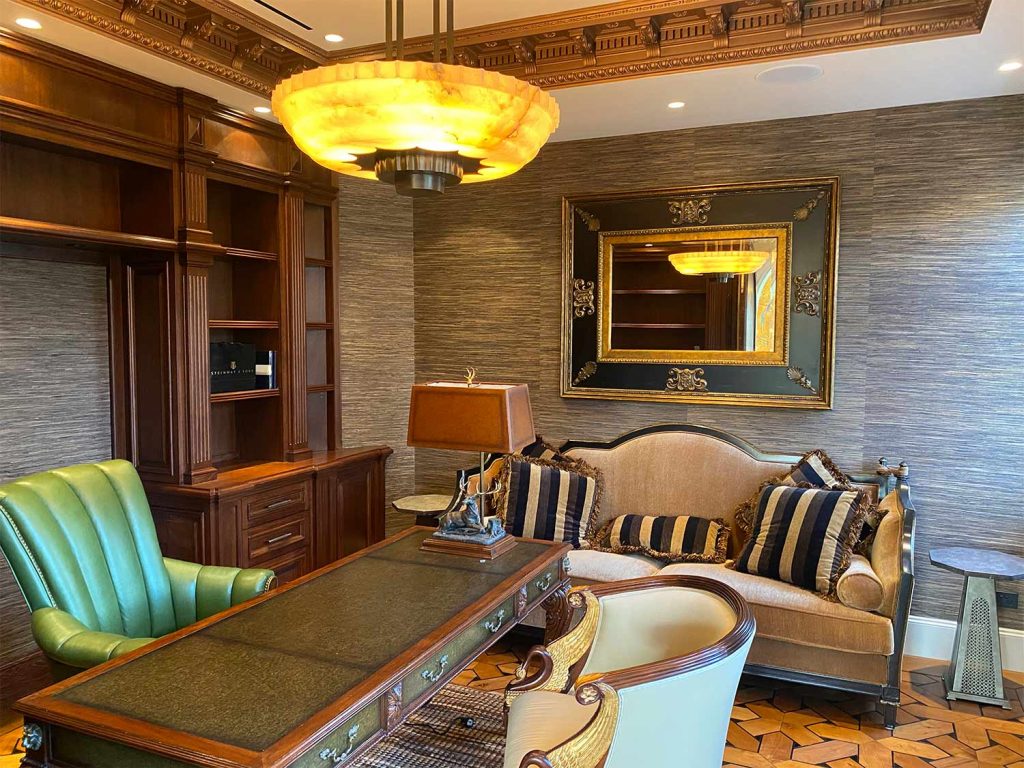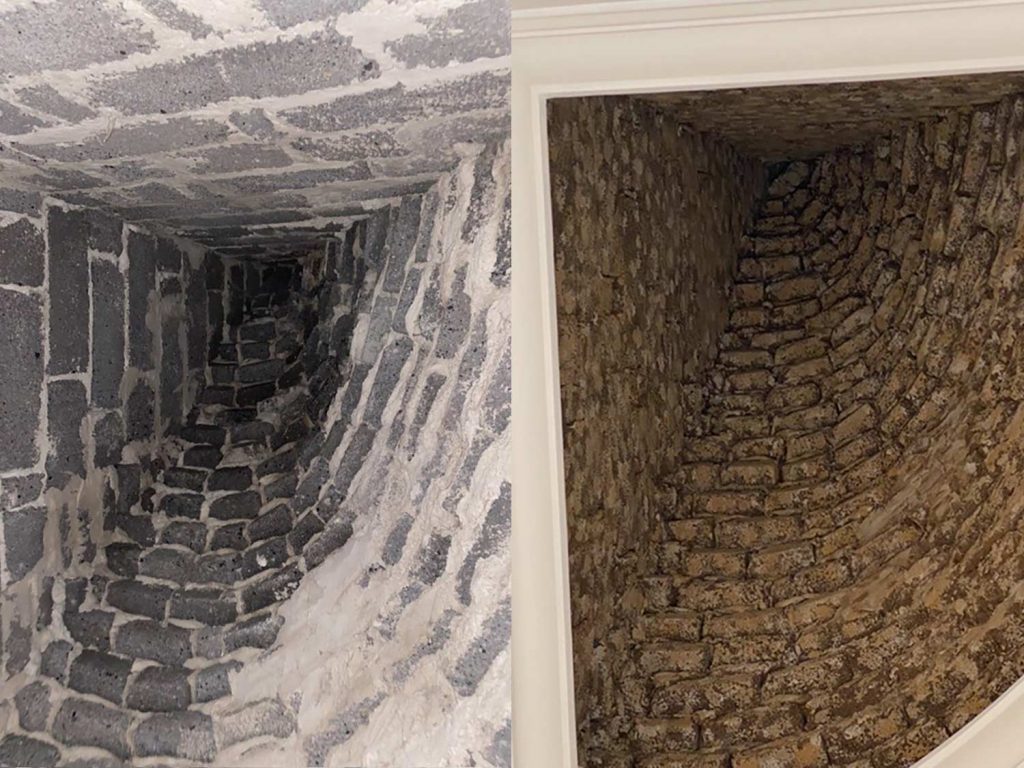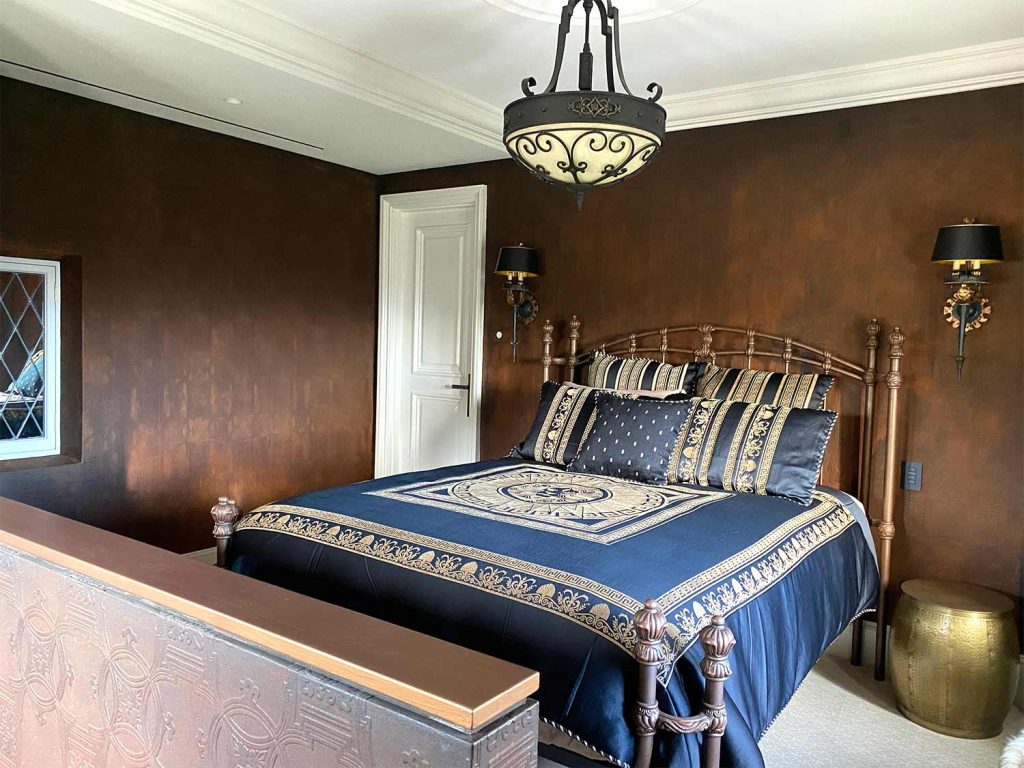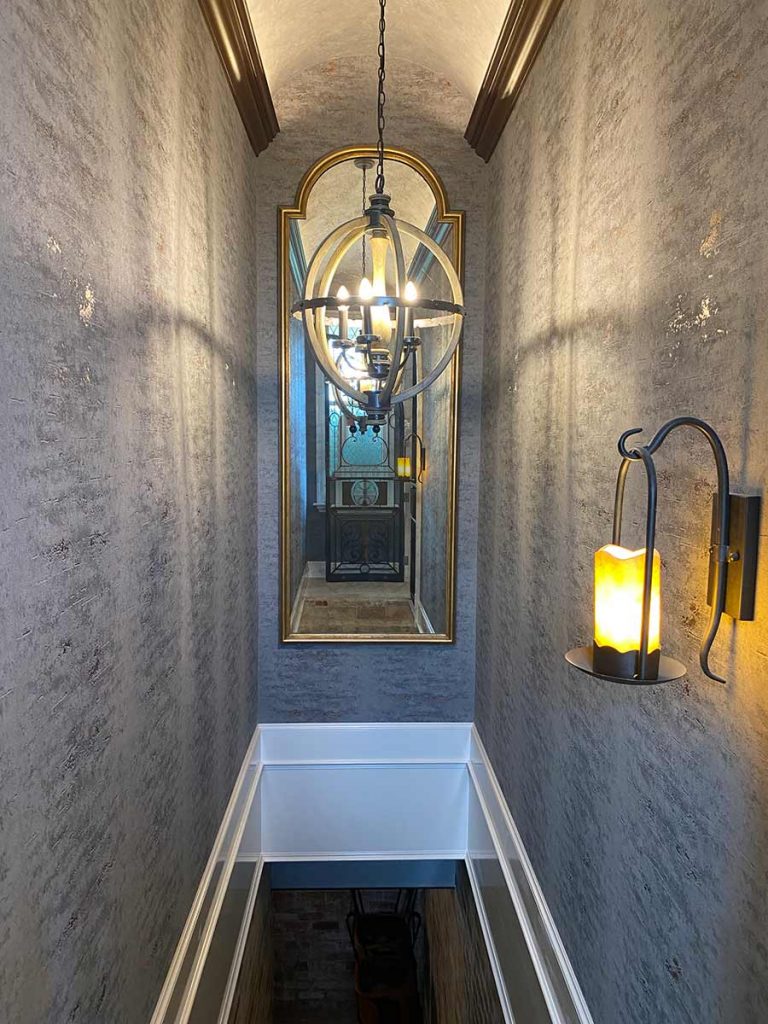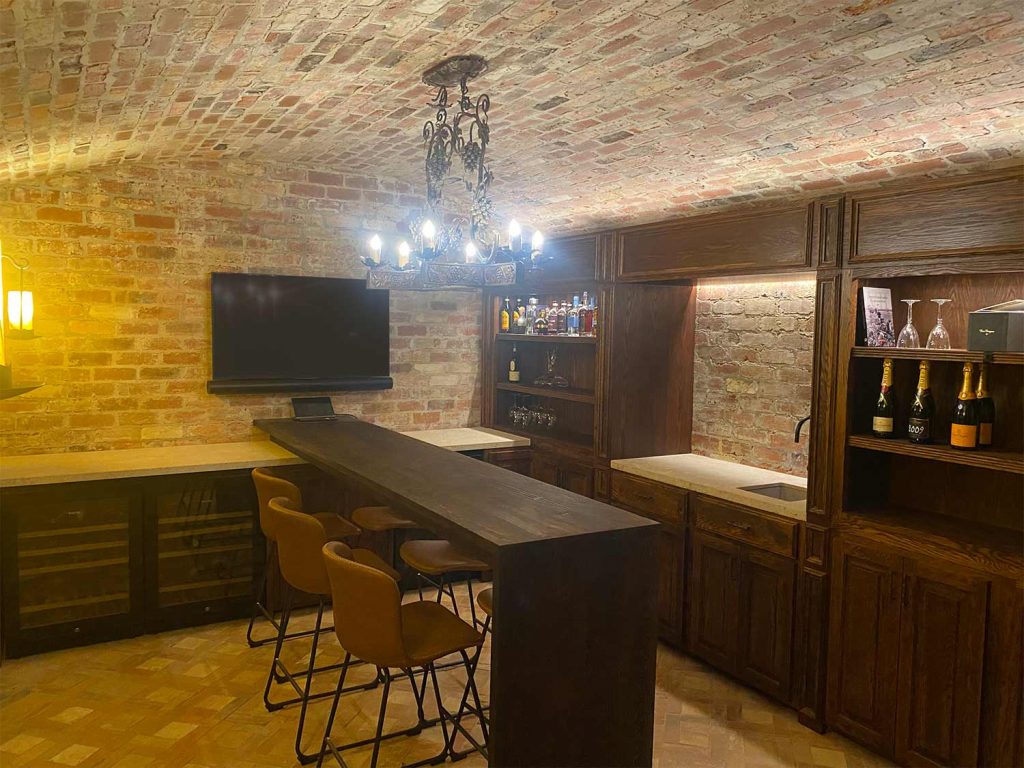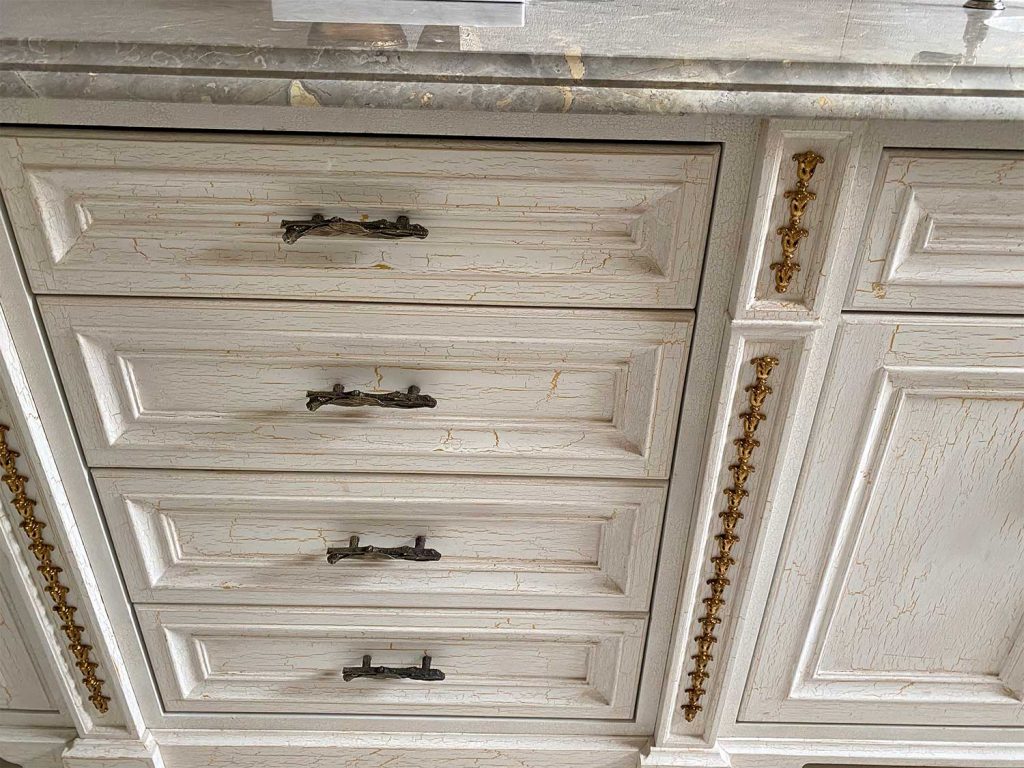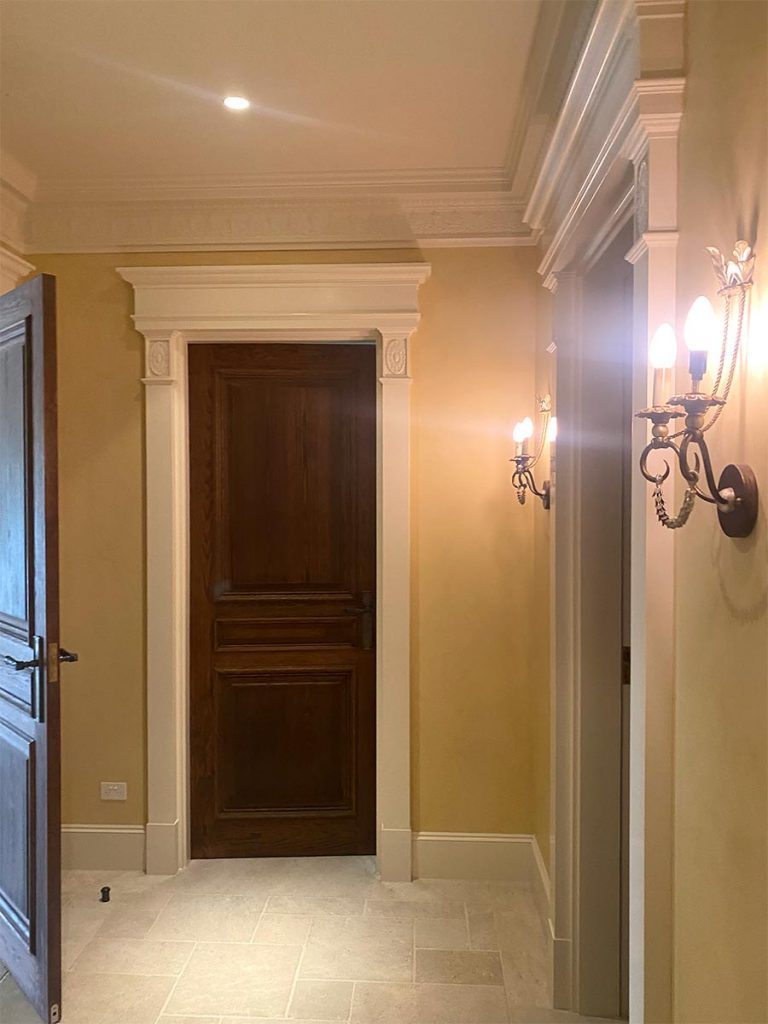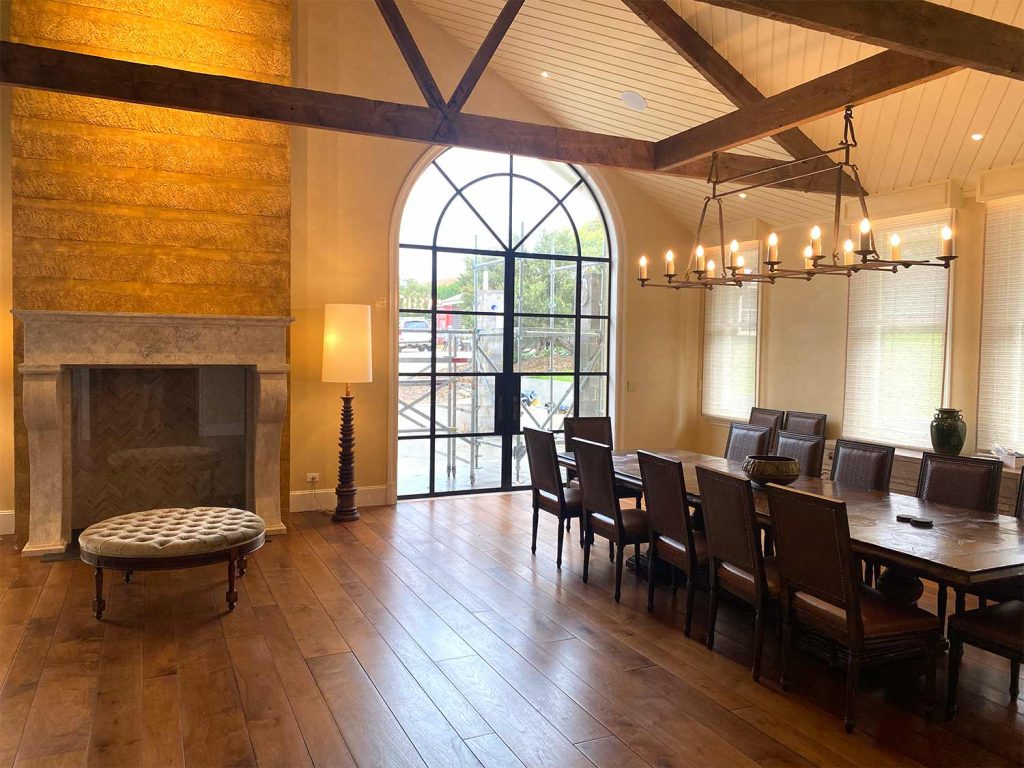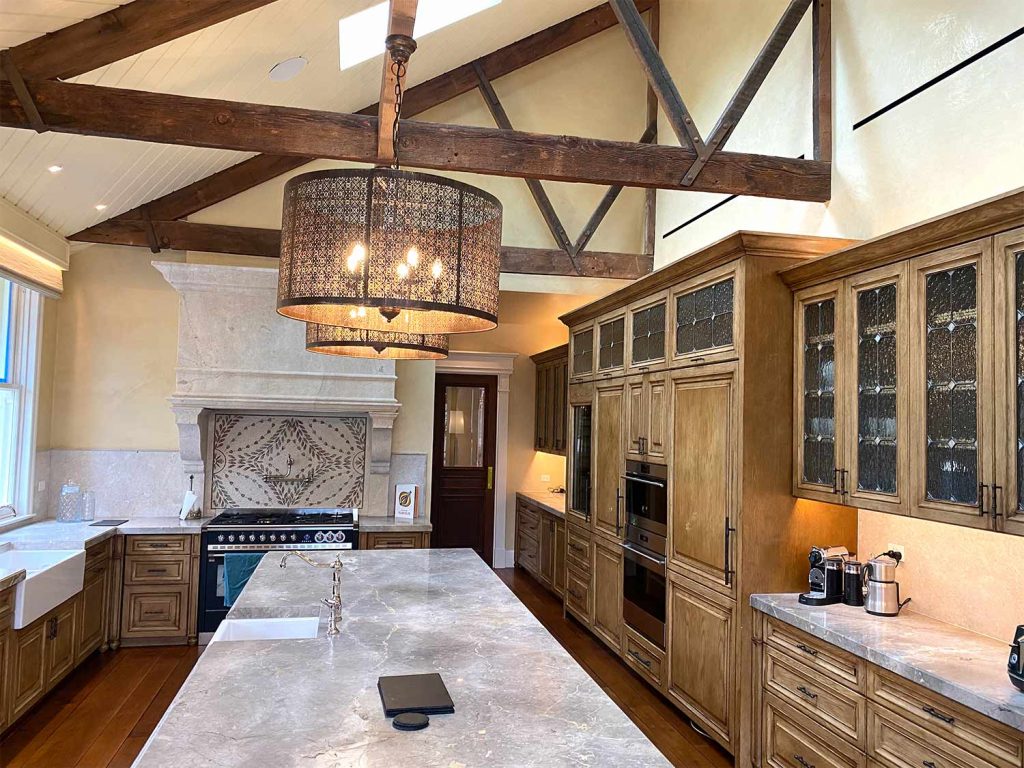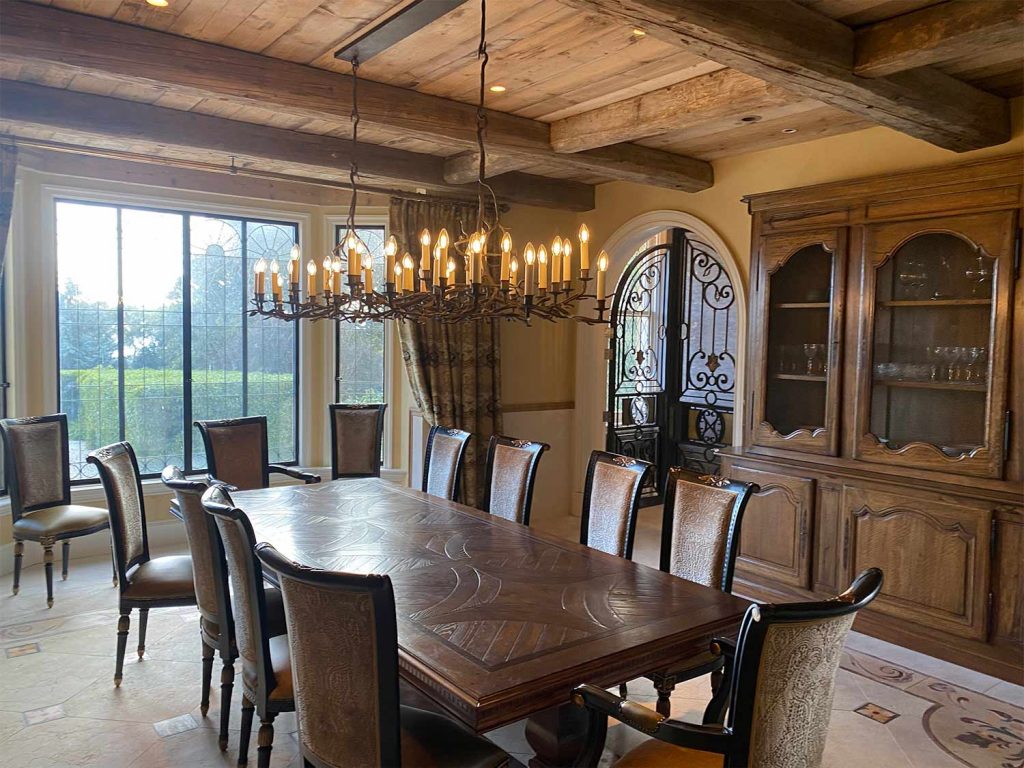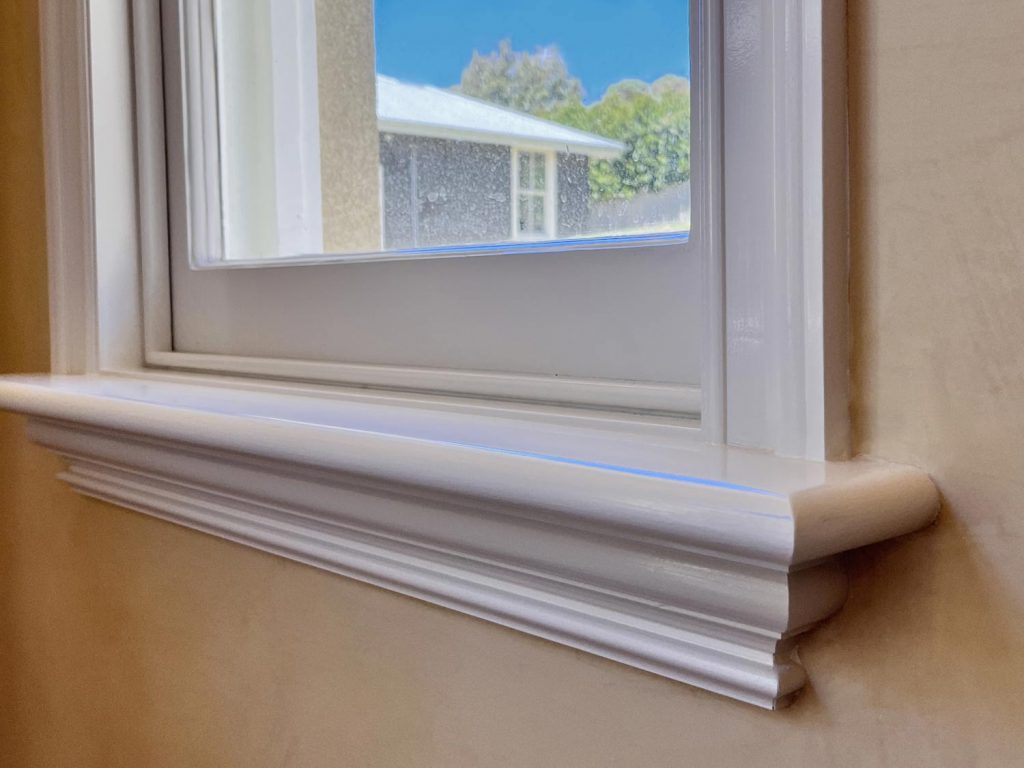
“The art of the possible
When the opportunity came along to participate in a complete refurbishment of the iconic Mornington Peninsula property, Glynt Manor, my team and I were truly thrilled to join the project. This beautiful mansion was built by the Henty family in 1910, and the current owners have invested meticulous care in its restoration, engaging the best architects and designers available to create a truly stunning result.
The designers went to extraordinary lengths to produce a remarkable home. Our job as painters and decorators was to ensure that the quality of every detail, colour, style and painting technique perfectly contributed to the overall effect.
Our experience with this remarkable assignment has reminded us that painting is far more than just a skill: it’s an art that can produce astonishing and beautiful results. We’ve been proud to use all our knowledge and experience, and in some cases, even to take our skills to new levels.
Detail that brings a space alive
Cornices are usually just how the ceiling and walls join up, right? Well, yes, in most houses. We brought these decorative cornices alive – using paint! One technique was to use a satin or semi-gloss finish, which provides a subtle contrast with the flat finish of the ceiling. The master bedroom’s Venetian glazed mouldings emphasise the beauty of the cornice, adding depth and greater three-dimensionality to the room.
Double Cornice
This bathroom is a stunning example of how the satin cornice works to emphasise the opulence of the space, and enhance all the quality features.
This is a technique I’d recommend to anyone who invests in decorative cornices for their home. It does, of course, require expert attention to detail to ensure all edges are sharp and clearly defined.
The ‘Authoritative’ Cornice
The cornice in the office was another that required particular skill and precision. It was sprayed with Porter’s bronze antique liquid gold, which has to be perfectly and evenly applied for the right effect. The preparation has to be millimetre perfect, or the entire effect is ruined. The result is a cornice that really draws the eye.
Bringing Old Bricks Alive
Another amazing ceiling feature was the small brick-lined turret above the stairwell. It had the potential to be a stunning feature, but the bricks were old, grey and unremarkable. We combined 4 different tones of paint colour, and 4 different methods of application (scrub brush, sponge, mottled brushes and various brush sizes) to create a mottled effect that brought these old bricks to life.
We Painted Over Wallpaper – On Purpose!
Painting over wallpaper is often the lazy person’s way of sprucing up an out-of-date look. But not here! The stunning rust effect in the Turret Bedroom was achieved by doing exactly that. It was a three-step process: first, hanging the wallpaper that would form the base layer of the ‘mottled’ effect, then painting it with black oxide paint, and finally adding a rust coat on top.
Down to the Cellar
The cellar is a great space to enjoy wine sampling in the company of good friends, and the entrance is really dramatic. The stunning curved ceiling is painted with Porter’s French Wash, applied with muslin rag to achieve the desired effect. The cornice is a dramatic feature in Bronze Liquid Gold.
You’d be Forgiven for Never Wanting to Leave
The atmosphere in the cellar is cool, cave-like and restful. The simplicity of the bricks and dark timber cabinetry is complemented with stunning lighting. We finished all the cabinetry with a walnut stain, using a dip and rag technique for a consistent finish.
The Crackle: One of My Favourite Effects
Probably the most demanding effect for a painter to achieve successfully is the Crackle Effect. It’s an ‘impact’ technique, to be used sparingly. But when done expertly, it’s an amazing finish.
Seven layers of paint are painstakingly applied to render a beautiful antique effect. One small error or slip, and the work must be scraped back to start again. I knew I needed the ultimate in concentration to achieve perfection, so established a routine of working early in the morning when the building was deserted. Then, we added small decorative detail in gold leaf. The result was immensely satisfying, and I’d certainly recommend this effect for anyone wanting to create a very special piece for their home.
The Beauty of Wood
The owners, architect and designer worked together to incorporate aged and new wood features into this restoration.
I think my favourite wood features are the doors, which we carefully prepared with sandpaper and steel wool before staining them using brush and rag technique. Finally, a top coating of penetrating Tung Oil completed the stunning effect.
The Detailed Art of Restoration
Elsewhere, the restoration of original features required other techniques. The original sash windows, for example, required a 9-step process: undercoat, sand, fill imperfections, re-undercoat, re-fill imperfections, undercoat the imperfections, and finally apply two top coats. The result gives a perfect finish.
Attention to Detail Contributes to Overall Beauty
Very few homes require the scope of this restoration. However, every homeowner planning their own renovation or new build can potentially incorporate some of the techniques we used here to create special beauty and ambience.
I wouldn’t recommend that an inexperienced person try DIY experimentation with many of the techniques described here. They are difficult, detailed, and require a great deal of expertise and patience. I’m grateful that over the years, I’ve been able to build on my initial training to develop my skills to the highest level, and that I’ve been able to find team members who are just as committed to high quality work. My team and I apply the right preparation, care, skill and patience to every task, whether it’s simple or complex. This is the only way to achieve an excellent result.
I invite you to browse a selection of my other projects. And remember to call me on 0418 102 566 if you’d like to discuss how any of these effects could work for your property.

